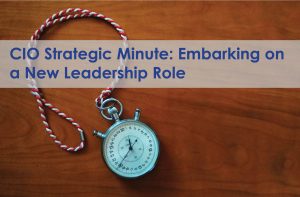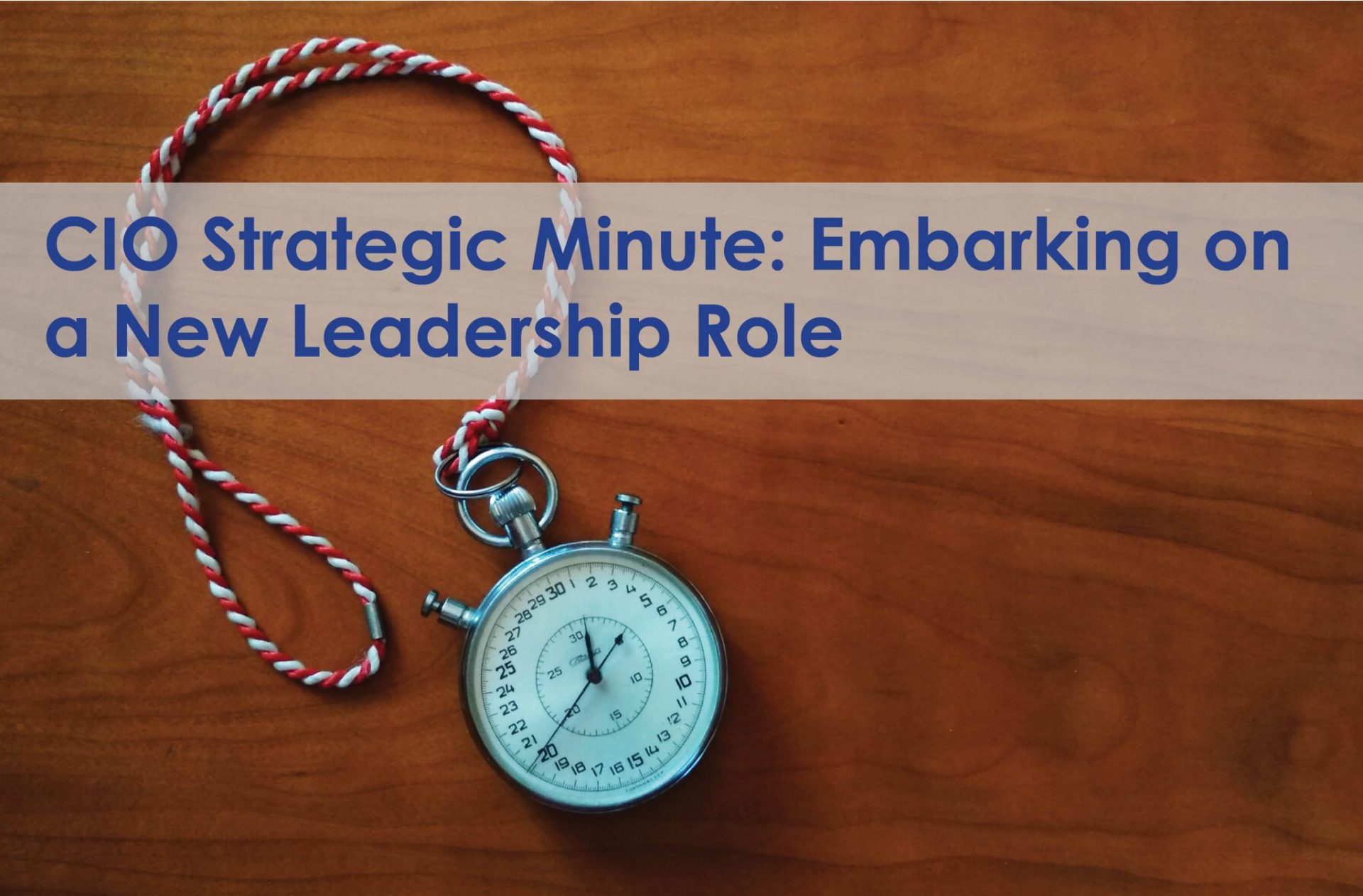
Consider Changes to Your Role and Responsibilities
Let’s start with considering changes in your work and approach to work. Are you taking on larger responsibilities for an IT organization or starting your first CIO position with leadership responsibility for technology across the campus? In either case, it’s likely that you will have broader technology and campus responsibilities. Where previously someone else had leadership responsibility for campus-wide services, now you are accountable. It is now your job to take the reins and develop the technology vision, not just manage for the present. It’s up to you to set direction and build for the future. Of course, new responsibilities mean a new set of issues and risks. No one wants to be caught unaware, so you’ll want to get an early start on understanding the issues and risks and how to approach them from the perspective of your new position. Careful reflection on these changes will help you become aligned with the needs of a new position.
Match Your Mindset to Your New Role
Next, let’s consider the appropriate mindset for your new role. Each move in our career teaches us to consider perspectives in a wider arc than the previous one. To be successful, we need to know the perspectives to leave behind, those we should retain, and new ones that we should adopt. It is easy to fall back to well-worn thinking habits. Even as we change institutions with a clean break between positions, we can easily slip back into the managerial or operational comfort zone of a previous role. This can be manifested by spending too much time in an inward perspective toward your organization rather than outward across the institution. Maybe you’ve just learned to effectively advocate for your division’s needs, but now effective advocacy requires an even fuller understanding of institutional needs and priorities. Pledge to lean in to new and uncomfortable areas of leadership, reset your arc of perspective, and avoid what was the comfort zone of your previous position. Be self-aware and manage the shift in mindset to match your new role.
Think and Act from a Broader Perspective
Now that we’ve considered approach and mindset, let’s turn to other important changes in moving into a new role. The first change usually involves one’s relative place within the institution. As you move upward in an institution, you have a wider spectrum of things to administer. Larger teams and budgets are only the beginning. As a senior leader, you must balance competing service needs both within and between divisions. If you’re moving into a C-level position, you will soon be thinking and talking about broader institutional issues, competing needs, and priorities in leadership meetings. Many of the conversations may not clearly relate to your area but being an engaged member of the team means finding ways to productively contribute to wide-ranging conversations. You may be called upon to help tell the narrative of the institution, as well as finding new and interesting ways to involve your team in the narrative.
Build Relationships Across Divisions
Joining a new leadership team means having new peers. How will you develop relationships with your new peers? This song refrain from my childhood has never left me: “Make new friends but keep the old. One is silver and the other gold.” Before beginning your new position, think about relationships and who you will need to interact with to be successful. How are your needs and your peer’s needs intertwined? When and where are the interesting conversations happening? How can you be present for them?
It’s not only your new peers, but also their colleagues who should be on your relationship radar. People with things in common naturally get together. Who are the people at your new level that need to chat and work together more often? Start by developing relationships with those groups - but don’t stop there. To facilitate productive conversations across campus consciously, build bridges between your direct reports and your peer’s direct reports. Take the time to get to know the direct reports of your peers and what they care about to open doors to productive conversations across divisions. Relationship building should be more than hierarchical, it should be multi-dimensional across the matrix of the institution.
Give Back to Your Peer Network
Finally, there are important relationships outside of the institution that can be both essential and rewarding. As you move upward in an institution, you are less likely to have colleagues who really know enough about your issues, challenges, and goals to have in depth conversations. When you’re in technology, you’ll be expected to understand the business areas of your peers more than they will be expected to understand yours. It can be lonely. While it’s natural to initially put off those outside relationships when you are so busy in your new role, it will pay off if you make time right away for external networking. Find your higher ed colleagues who share common ground, whether it is colleagues in the same state system or those who relate to the demographics of your institution. Think about the ways your higher ed network can help you and the ways you can give back to your network.
There is a lot to think about and it is easy to get lost in your thoughts or feel out of sorts as you adjust. All the more reason to keep two important principles in mind at all times: Always start by listening and never forget the human who’s in front of you. I keep this quote by Maya Angelou on my monitor: “People remember how you make them feel.”
With your mindset newly aligned, you are finally ready to turn your attention to those long lists and the work ahead. Even here, there are new things to think about. Leaders describe success, outline the guardrails along the way, and let the team take the driver’s seat. Help your team envision the destination and give them the opportunities to create paths that you hadn’t imagined.
This post was authored by Vice President Cathy Bates, who advises clients on technology strategic planning, information security, and initiatives that transform institutional academic, administrative, and research capabilities. A former CIO, Cathy speaks and writes frequently about how to build and sustain effective organizations and programs. Connect with Cathy via Twitter and LinkedIn.


